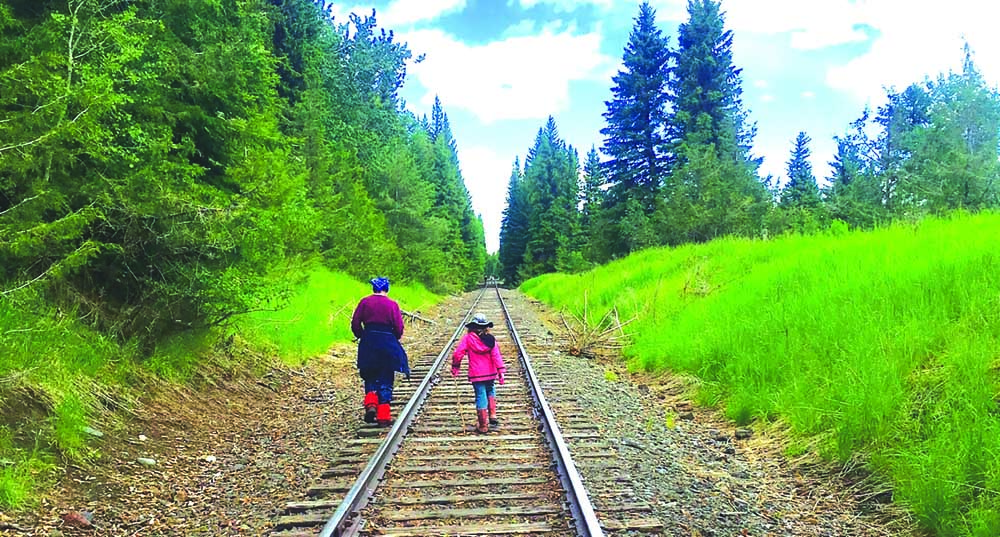Meat of the Matter
Published 9:00 am Saturday, January 15, 2022

- Bennett
BAKER CITY — Curtis Martin doesn’t expect a problem that was decades in the making to be solved by a single announcement from the White House, even one that comes with a billion-dollar pledge.
But Martin, a North Powder cattle rancher and a past president of the Oregon Cattlemen’s Association, is nonetheless encouraged by the Biden administration’s effort to increase competition in the meatpacking industry, which is dominated by four corporations.
“I think it’s wonderful,” Martin said of the administration’s recent announcement that it would divert $1 billion from the 2021 American Rescue Plan Act to address problems in the meat-processing system and try to encourage the construction of smaller, regional meat-processing operations and, potentially, curb a recent rise in beef, pork and poultry prices at the retail level.
“It’s really a positive report, and I think the best thing ranchers can do is engage in it and help Tom Vilsack,” Martin said.
Vilsack is the U.S. agriculture secretary, and one of the federal officials who met with Biden recently in a virtual meeting to discuss the situation.
The resulting plan, which was announced Jan. 3, has among its goals enforcing existing competition laws and making the machinations of the cattle markets more transparent.
That new federal focus is welcome news for Martin, who has been concerned for many years about what he considers an unfair manipulation of beef markets by the four companies that control about 85% of the country’s cattle processing — Cargill, Tyson Foods, JBS and National Beef Packing.
While retail beef prices have risen by 21% over the past year, according to the U.S. Department of Agriculture, that trend hasn’t been reflected in what ranchers are receiving for their cattle, Martin said.
Tom Sharp, former Oregon Cattlemen’s president, addressed the rise in beef prices in an October 2021 interview with the Pacific Northwest Ag Network when he still was president of the OCA.
“Those profits have largely gone solely to the major beef packing companies that dominate boxed beef production here in the United States,” Sharp said. “There’s really four multinational companies that produce 83% of the total boxed beef for retail consumption here in the United States.”
Martin said he believes one way to reduce the dominance those four companies have is to encourage more local and regional processing of beef.
That would also give ranchers more options for marketing their cattle, and boost consumer choice, potentially affording them the option of buying beef raised, and butchered, in the same county where they live.
Martin said there is a sufficient number of beef cattle in Eastern Oregon and Western Idaho to support processing plants with a capacity to handle 250 to 500 head per day.
But now, he said, “we have absolutely no competition in the Northwest. There’s no negotiation. You take what is given to you (in terms of prices).”
Martin said he’s encouraged by Agri Beef’s construction of a beef-processing plant in Jerome, Idaho. It’s expected to open by the end of 2022, and will have a capacity of about 500 head per day.
“That’s a great thing, but I still see the need for more competition,” Martin said.
Smaller processing plants would also benefit rural economies by creating jobs, he said.
Increasing competition
Martin said he’s encouraged that Attorney General Merrick Garland also participated in the recent virtual meeting.
Martin has been advocating for years to have the U.S. Justice Department investigate what he believes constitutes “price manipulation” in the beef industry.
Matt McElligott, who raises cattle between Haines and North Powder, said he’s glad that issues in the beef industry are being acknowledged at the federal level.
“The good thing is that it is being talked about,” said McElligott, who is chairman of the public lands committee for the Oregon Cattlemen’s Association and president-elect. “It’s something we in the industry have been talking about for a long time, the need to have a more vibrant and competitive industry.”
McElligott said that although details of the Biden administration’s $1 billion campaign have yet to be determined, a preliminary draft called for spending $375 million, over two phases, to “jumpstart independent processing” for beef and other meat.
The first phase could include $150 million earmarked for 15 specific local processing projects, which could potentially help ranchers market beef to local consumers, McElligott said. Prospective processors would compete for the dollars under the proposal.
The second phase would designate the remaining $225 million to expand the capacity at existing processing plants across the nation, he said.
McElligott said boosting independent processing, and thus reducing the dominance of the four leading processing companies, would be beneficial to both ranchers and consumers.
“The more processing you have the more opportunities we have for different markets for the cow-calf producer,” he said. “That gives producers more options and it gives consumers more options.”
Now, only about 5% of the beef cattle born in Oregon are actually butchered here, McElligott said.
Both he and Martin pointed out that building a processing plant is no small undertaking.
“To say it’s complex is an understatement for sure,” Martin said.
Complying with federal food safety rules and other regulations is neither simple nor inexpensive, and Martin said he hopes the Biden administration’s $1 billion campaign will also include resources to help potential entrepreneurs negotiate the regulatory labyrinth.
Among other things, he advocates for the federal government to eliminate or streamline regulations that deter people from pursuing regional or local processing plants, and to assign a coordinator to work with prospective owners to help them with all aspects of the endeavor, including financing.
McElligott said a significant obstacle in the industry for ranchers who want to sell beef directly to local customers is that packaged products must be inspected by someone certified by the USDA.
He said he can sell a half of beef “on the hoof” to a neighbor, but not a single pound of packaged hamburger unless it’s been inspected.
McElligott said he’s encouraged that a draft plan for spending the $1 billion includes $100 million to pay overtime to USDA-certified inspectors, which could expand independent processing markets.
Truth in beef labeling
Mark Bennett, a Baker County commissioner who also owns a cattle ranch in the southern part of the county near Unity, agrees with Martin and McElligott that the Biden administration’s announcement is promising.
“I think it’s a worthy undertaking,” Bennett said. “Any time you have concentration it limits competition and the opportunity for innovation. This whole discussion is really crucial.”
Bennett said one of the most common topics that come up in his conversations with other ranchers is mandatory country of origin labeling.
Although some meat sold in the U.S., including chicken, is required to be labeled to show where the animal was raised, that’s not the case with beef.
Beef can be labeled as a product of the U.S. even if the cattle were raised in another country but were butchered in the U.S.
(Retailers also can include details about where animals were born and raised; they’re just not required to do so.)
Ranchers and industry groups have been pushing for beef, which has not been subject to mandatory country-of-origin labeling since 2016, to be reinserted into the labeling law along with chicken and other meats.
“American consumers want to know where their beef comes from,” Bennett said.
There has been some interest in Congress in reinstituting mandatory labeling for beef. It ended after officials from Mexico and Canada vowed to impose tariffs on American beef if the mandatory labeling continued.
A group of U.S. senators introduced legislation in September 2021 calling for the U.S. trade representative and USDA to come up with a plan to improve beef labeling transparency.
McElligott said country-of-origin labeling “really needs to be addressed.”
He pointed out that Americans’ demand for beef has continued to grow even with rising retail prices.
He considers this evidence that people recognize the value of beef.
“If you look at everything beef gives you from a nutritional standpoint, it’s still an economical part of your plate,” McElligott said.
“It’s something we in the industry have been talking about for a long time, the need to have a more vibrant and competitive industry.”
— Matt McElligott, Baker County cattle rancher









